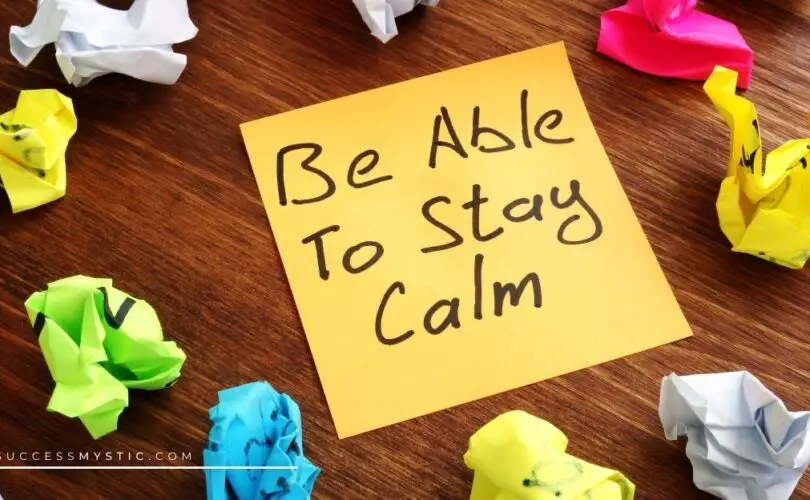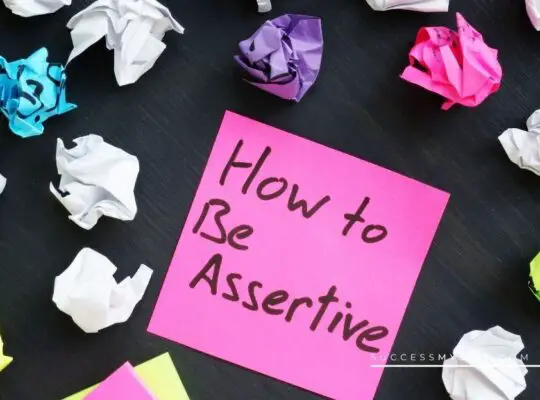Anytime we’re faced with adversity and strife how we respond, and the measure of our composure says a lot. It also dictates end results and consequences like our health following certain events, whether or not we physically survive, and future psychological developments.
The ability to stay calm under pressure is an important life skill that can be sharpened to our advantage. There are 5 key factors in staying calm under pressure.
1| Stay Organized
• The best time to give relief during a disaster is before it happens.
• Planning ahead is part of staying organized.
• Staying organized helps us to navigate rough waters when we come to them.
Life is not a steady supply of happy days in the sun on calm waters. Storms develop and emerge often. We all know they do.
The first step to organizing is planning ahead, and part of that is accepting that life will always find ways to challenge us by tossing us into high pressure storms whenever the conditions allow.
For example:
We know that natural disasters will arise. So, in response to this we have organizations devoted to stock piling supplies, lists of professionals who can help, and developing plans of action before the disasters come knocking
I realize that certain recent events make it seem like the organizing and planning was pointless but think of how difficult it must be to get into geographical areas under natural disaster. If supplies and medical professionals weren’t standing by, how much longer would victims have to wait?
The same principle applies to high pressure situations.
We know they’re coming. Maybe we don’t know the details, but we can develop a generalized plan centered on what we do know and organize accordingly. When the need arises, we are armed with the necessary tools to react appropriately.
Understand yourself, and how you respond in certain situations.
It’s an accepted and established fact that no one knows how we will react in a given situation until we are put in that situation and forced to act.
However, by understanding your nature, how you have reacted in similar situations in the past, and accepting who you are, you can get a preview of how you might react. You know that in a high-pressure situation, a rush of a specific feeling is a certain chemical reacting in your body.
We all know what adrenaline feels like, and we all know how we each react to it. By understanding how your psych and your physique react independently when confronted with something like adrenaline, you can give it a name. Once you can do that, you can begin to design your future reactions to different circumstances. (Sicinski)
Ask yourself these questions when confronted with situations that elicit biochemical reactions within your body.
• What is causing me to feel this?
• What, specifically, in this situation is my mind or body reacting to?
• How do these triggers affect me? On what level?
• Does reacting to this feeling help me or hurt me? In what way?
When you address these concerns, and name what has shaken you, you can re-label what you’re feeling and convince your brain that the situation you’re in may not be fight or flight; and if it is, to remain calm. (Sicinski)
2| Keep Optimism, Faith, And Confidence At Hand
Optimism is a character trait marked by hopefulness for the future. Faith helps you to find your way when you get lost in the turmoil. Confidence, when not falsely fueled by participation trophies and the like, gives you the ability to leverage past experience with a certainty of knowledge because there is truth in that trust. (Lythogoe, 2018)
Though blind optimism is never healthy, a recent study found that people who keep positive expectations for their future, grounded in reality, respond to adversity and strife in more adaptive ways. (Sheier & Segertstrom, 2010) This, in turn, develops a certain resilience that we all need to survive in high pressure situations.
3| Expand Your Comfort Zone
Notice how we just glazed past resilience?
Well, resilience is a key component in succeeding in high pressure situations and life-styles. Developing this skill and utilizing it allows us to keep calm when we experience adversity and respond well to our immediate situations.
Also, one thing many people forget is that once a high-pressure situation has passed, we still have a residual feeling of its presence. This is why many soldiers, first responders, police officers, and survivors of abuse develop PTSD. Utilizing our resilience allows us to overcome that residual presence of our fight-or-flight reactions commonly engaged in high pressure situations.
Expanding your comfort zone in preparation for high pressure situations is one way to sharpen resilience.
4| Breathe
This may feel like a cliché but focusing on breathing and utilizing specific breathing exercises brings more oxygen to your lungs, then to your bloodstream. A fight-or-flight reaction common to high pressure situations, whether those are actual life or death situations, or a high-pressure work environment, will decrease oxygen availability in your blood flow.
Think of it like tank-less water heater.
The water is heated by coils within the system. The faster the cold water passes through the coils, the less time it has to heat up. If you slow down the water flow, the water spends more time in the coils and heats up more. The time difference is minute but it’s also significant enough to make a measurable difference.
5| Discern
During a high-pressure situation, you have to discern whether this is a life-threatening situation, a life-style issue, or a work issue that can have compounding effects on your economic life. Once that is discerned, all the other methods of staying calm in a high-pressure situation can be utilized.
But you won’t get there if you can’t calm yourself enough to do so, if you haven’t expanded your comfort zone so that your resilient nature can kick in, and if you don’t trust yourself enough with an optimistic attitude to do it.
Once that is done, you can utilize your past planning and organizing to focus on what the high-pressure situation is itself, and what your role is.







